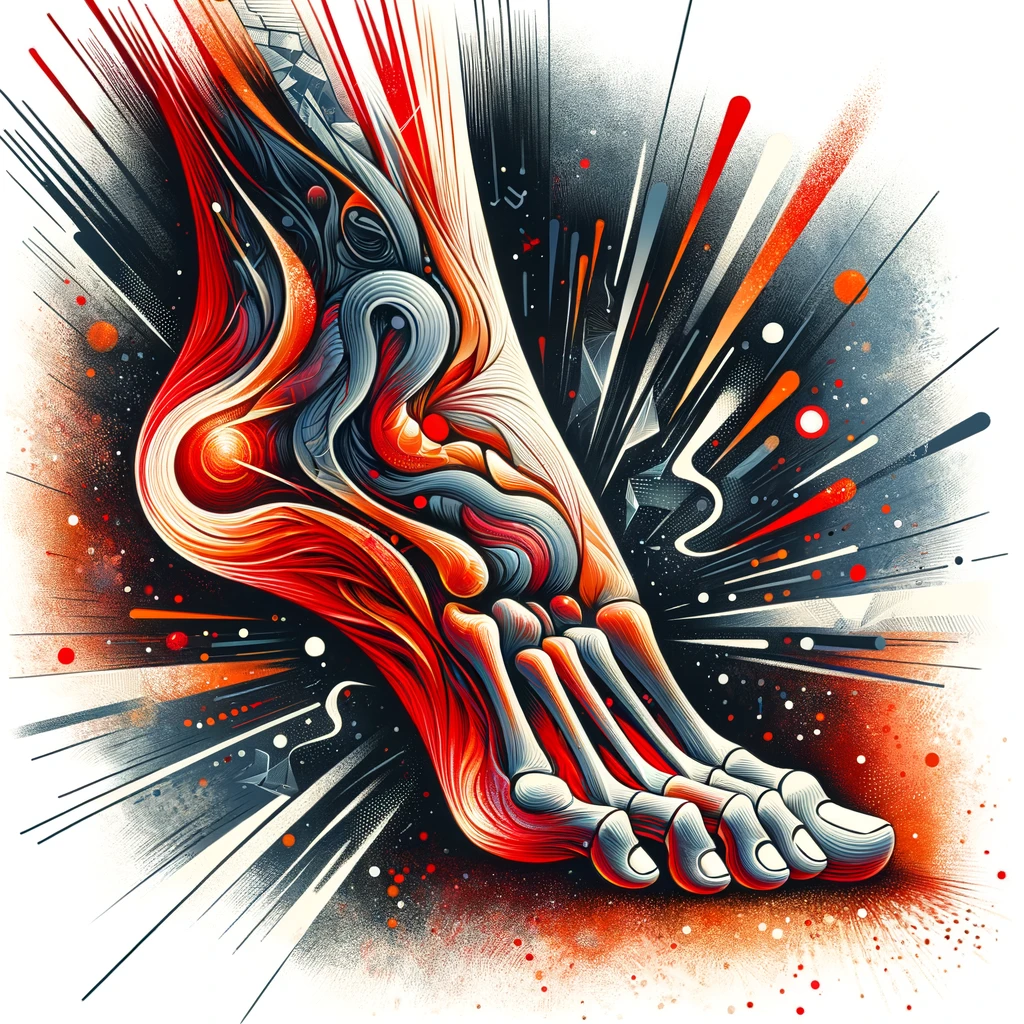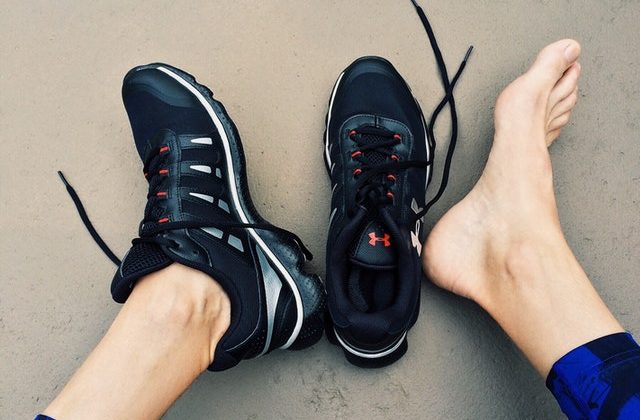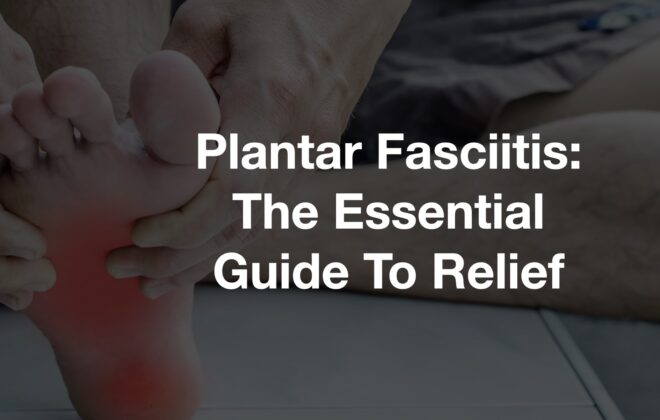How Long Does Plantar Fasciitis Last?

Welcome to the in-depth exploration of plantar fasciitis, a condition that causes pain in the heel and bottom of the foot. Plantar fasciitis is known for its stubborn nature, often lasting from several weeks to months and possibly extending up to years if left untreated.
Understanding this condition is key; it means recognizing the pain at your heel’s base when you take those first steps in the morning or after sitting for a long time.
The road to recovery varies significantly with factors such as how severe your condition is and what treatment methods you choose. Simple treatments like icing, stretching exercises, and changing your daily activities generally lead to improvement within months.
Taking medications like ibuprofen can reduce pain and swelling too.
For more persistent cases where these conservative measures don’t do the trick, surgery might be recommended by professionals. Don’t underestimate lifestyle remedies either—maintaining a healthy weight and choosing supportive footwear play their part in healing.
Remember that catching plantar fasciitis early on could cut down your recovery timeline dramatically—sometimes even reducing it to just a week or two! With professional guidance, many find relief between six to twelve weeks.
You’re about to navigate through each aspect affecting how long you’ll deal with plantar fasciitis—from severity indicators to tried-and-true treatments—all geared towards getting you back on your feet comfortably.
Let’s walk through this together, step by step.
Key Takeaways
- Plantar fasciitis is an inflammation of the tissue connecting the heel to toes, causing sharp pain in the foot, especially after periods of rest.
- Recovery time depends on severity: a few days to weeks for mild cases; several weeks to months for moderate cases; and several months to a year or more for severe cases.
- Effective treatments include rest, ice, proper footwear and orthotics, over-the-counter medications for pain relief, stretching exercises, physical therapy, and possibly surgical interventions in chronic situations.
- Early treatment often leads to quicker recovery times; ignoring symptoms can extend healing duration significantly.
- Individual factors such as compliance with treatment plans and overall health contribute to how fast one recovers from plantar fasciitis.
Understanding Plantar Fasciitis

Embarking on your journey to comprehend plantar fasciitis, you’ll delve into the pivotal aspects of what constitutes this foot ailment and recognize its hallmark symptoms. This comprehensive exploration is the foundation for grasping how the inflammation of the plantar fascia—the band connecting your heel to your toes—can profoundly affect every step you take, manifesting as a persistent ache beneath your foot’s arch.
Definition and Symptoms
Plantar fasciitis is a common foot ailment resulting from inflammation of the plantar fascia, which is the thick band of tissue connecting your heel bone to your toes. Its primary function is to support the arch of your foot and absorb shock when you walk.
When this tissue becomes irritated or inflamed, it can cause significant discomfort and pain in the bottom of your foot, particularly near the heel.
You may experience symptoms like a sharp ache or stabbing sensation in your heel with the first steps after waking up or after long periods of sitting. The pain might decrease as you move more but can return after standing for a long time or when you stand up after sitting.
Also, tenderness in the arch area and swelling around your heel are frequent signs that point towards this condition. A tight Achilles tendon—the band that connects your calf muscles to your heel—can further exacerbate issues related to plantar fasciitis by placing additional strain on the tissues.
Managing these symptoms often involves incorporating supportive shoes with good arch support into your daily routine, potentially alongside orthotics designed for extra cushioning and stabilization.
Regular stretching exercises can help loosen up a stiff Achilles tendon and alleviate some tension across the affected area.
If conservative treatments don’t provide relief, consulting with podiatrists who specialize in sports medicine could be beneficial—they have tools at their disposal from night splints that keep the plantar fascia stretched overnight to physical therapy techniques aimed at strengthening lower leg muscles involved in maintaining proper foot mechanics.
Factors Influencing Recovery Time
The duration it takes for you to overcome plantar fasciitis is not set in stone; various elements heavily sway the healing process, drawing out a timeline unique to each individual’s journey toward pain relief and mobility restoration—dive deeper to unravel how these determinants can shape your path to recovery.
Severity of Condition
Recovery time from plantar fasciitis heavily depends on how severe the damage to your plantar fascia is.
However, if there’s a tear in the tissue or the presence of heel spurs complicating your condition, expect a longer road to recovery.
Your care routine will change too with increased severity—more visits to physiotherapists or podiatrists likely await you. They may recommend treatments such as platelet-rich plasma injections or ultrasonic therapy aimed at reducing inflammation and promoting healing within the foot muscles and tendons.
You’ll also be taught exercises that improve flexibility in your calves and strengthen your arches—if flat feet are contributing to over-stressing your plantar fascial band—so that you can prevent future injuries.
Treatment Methods
A physical therapist may recommend exercises like calf raises and dorsiflexion stretches to strengthen your foot’s arch and Achilles tendons.
Supportive footwear is essential; choose shoes with proper insoles that help with overpronation and take care not to walk barefoot on hard surfaces. For severe cases, a podiatrist may suggest custom orthotics or even surgical procedures if conservative treatments don’t provide relief.
Alternatives such as acupuncture or platelet-rich plasma injections are options too, offered by certified acupuncturists or surgeons skilled in minimally invasive techniques. And remember, incorporating daily self-care practices such as massaging the affected area can contribute significantly to a faster recovery journey.
Average Duration for Plantar Fasciitis Recovery
Understanding the average duration for plantar fasciitis recovery is critical for setting realistic expectations and planning your treatment strategy. Recovery times can fluctuate significantly, influenced by the severity of the condition, adherence to treatment regimens, and individual healing rates.
| Condition Severity | Treatment Approach | Recovery Time Frame |
|---|---|---|
| Mild Plantar Fasciitis | Rest, ice, conservative measures | A few days to several weeks |
| Moderate Plantar Fasciitis | Physical therapy, orthotics, medication | Several weeks to a few months |
| Severe Plantar Fasciitis | Procedural interventions, possible surgery | Several months to a year or more |
| Chronic Plantar Fasciitis | Comprehensive treatment plan, lifestyle adjustments | Can be ongoing; varies widely |
You’ll notice that the approach to treatment adapts as the severity of plantar fasciitis increases. Early intervention often results in faster recovery, whereas delayed treatment may prolong the healing process. Professional care typically shortens the recovery time, with many individuals observing significant improvement within 6 to 12 weeks. However, it’s essential to recognize that each case is unique and patience is key. Healing cannot be rushed, and diligent adherence to your treatment plan offers the best chance for a swift and successful recovery from plantar fasciitis.
Conclusion
In wrapping up, the healing timeline for plantar fasciitis swings widely based on several factors. Your commitment to foot care through conservative treatments often leads to a full recovery in months.
If pain persists, don’t hesitate to seek podiatry advice or explore advanced interventions like shockwave therapy. Remember, the right approach and early action can get you back on your feet, engaging in activities you love without discomfort.
Keep those arches supported and give your soles the attention they deserve for a speedy comeback!
Sam Visnic
Most Popular Posts
Categories
- Deep Gluteal Pain Syndrome (8)
- Deltoids (2)
- Foam Rolling (2)
- Glutes (9)
- Hamstrings (5)
- Hypnosis for Pain (3)
- Lats (2)
- Levator Scapulae (4)
- Lifestyle (8)
- Massage Therapy (39)
- Mobility (21)
- Movement and Exercise (19)
- Muscles (22)
- Nutrition (2)
- Obliques (1)
- Pain (25)
- Pectorals (3)
- Piriformis (3)
- Plantar Fasciitis (11)
- Psoas (11)
- Quadratus Lumborum (3)
- Quadriceps (2)
- Rhomboids (3)
- Sciatica (1)
- Serratus Anterior (1)
- SI Joint (14)
- Sternocleidomastoid (1)
- Stretching (18)
- Subscapularis (1)
- TMJ (2)
- Trapezius (1)
- Uncategorized (12)









